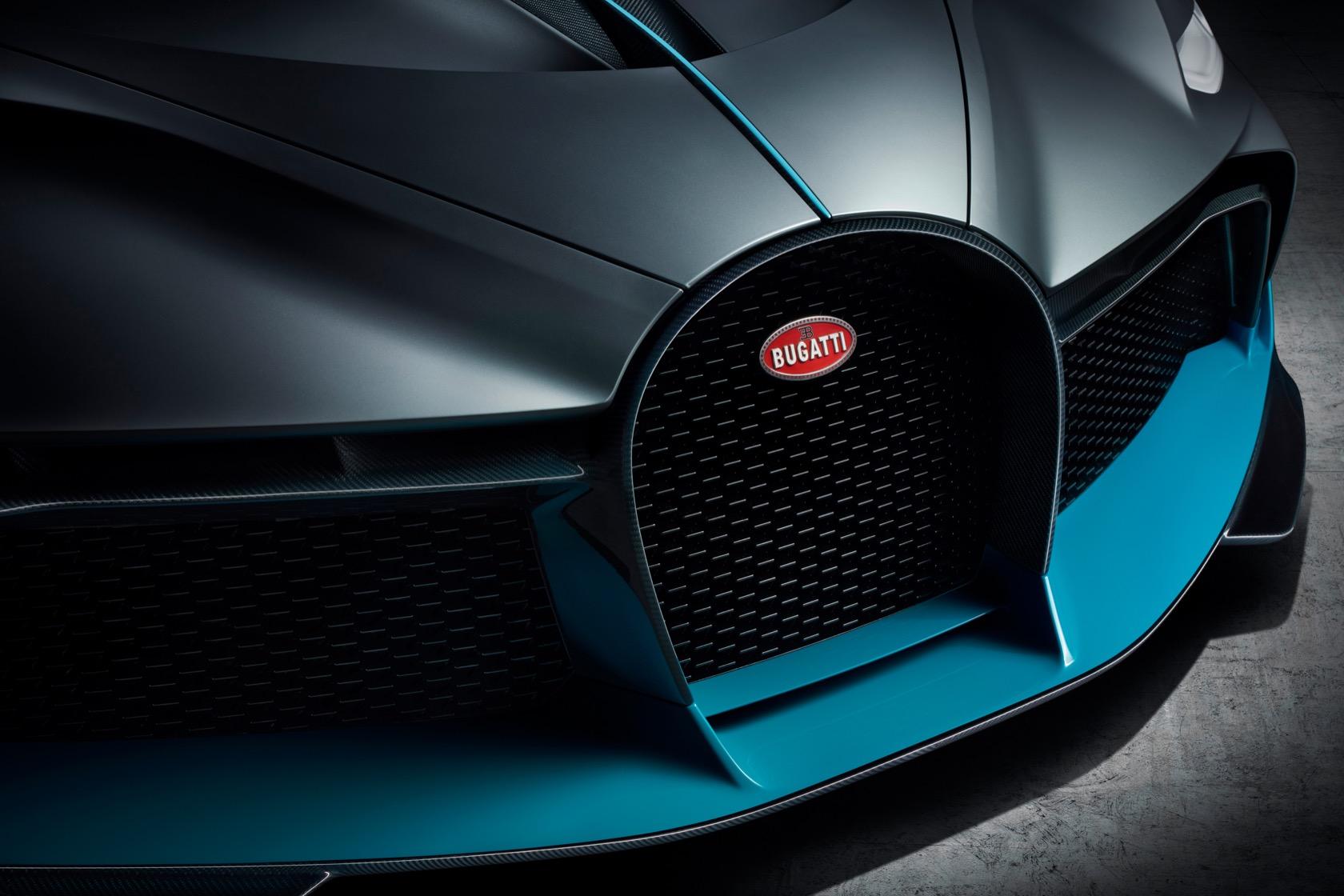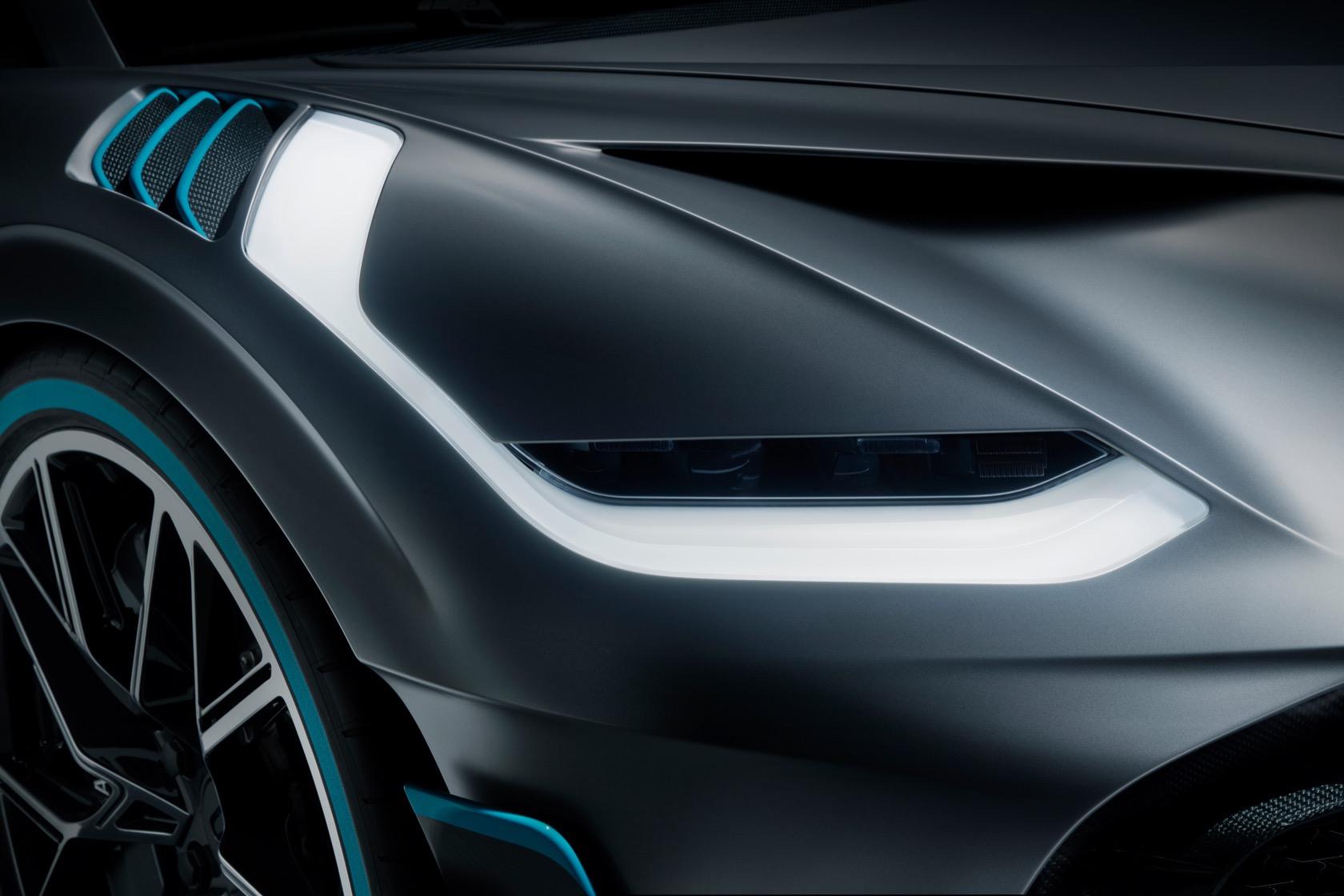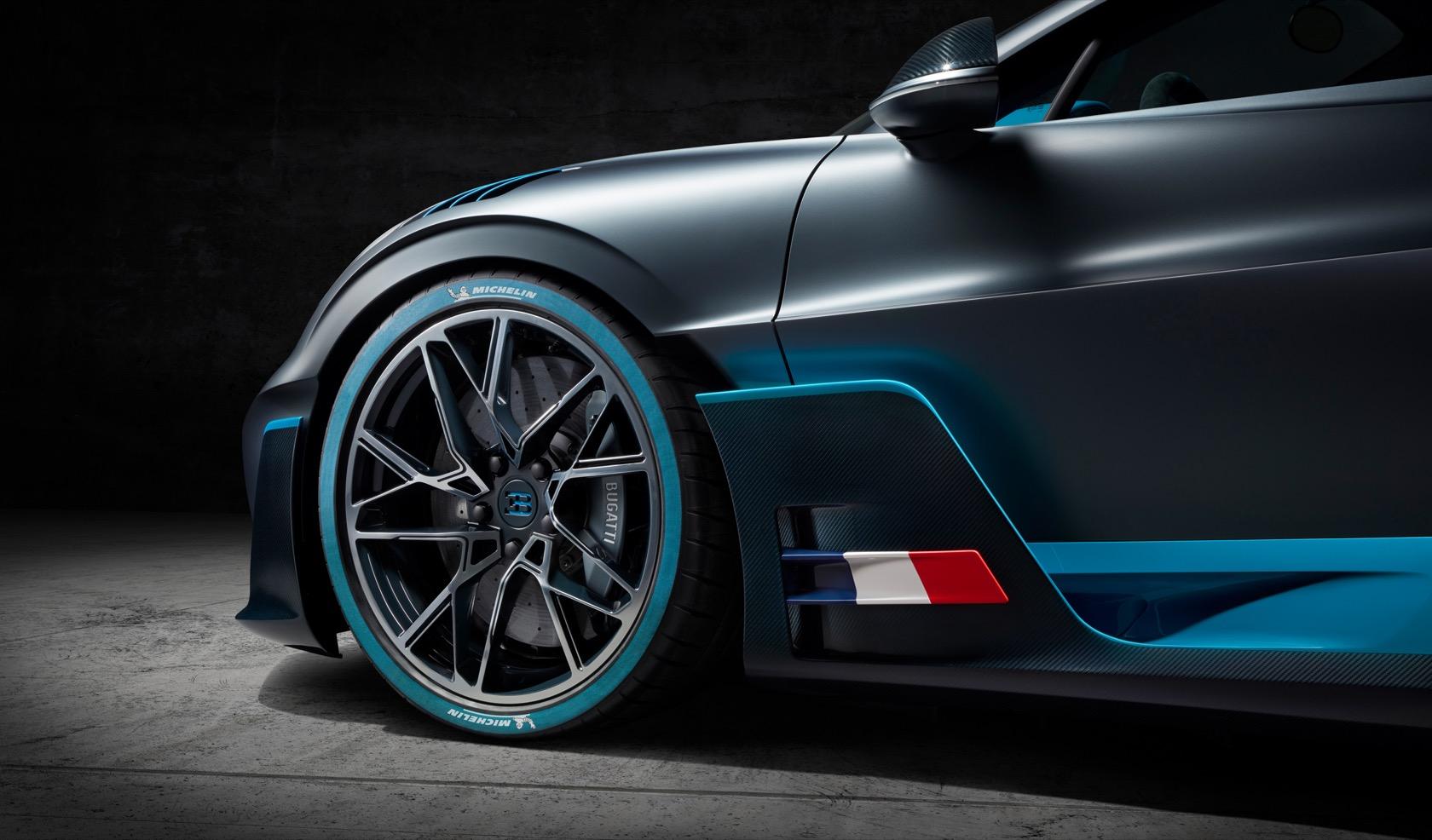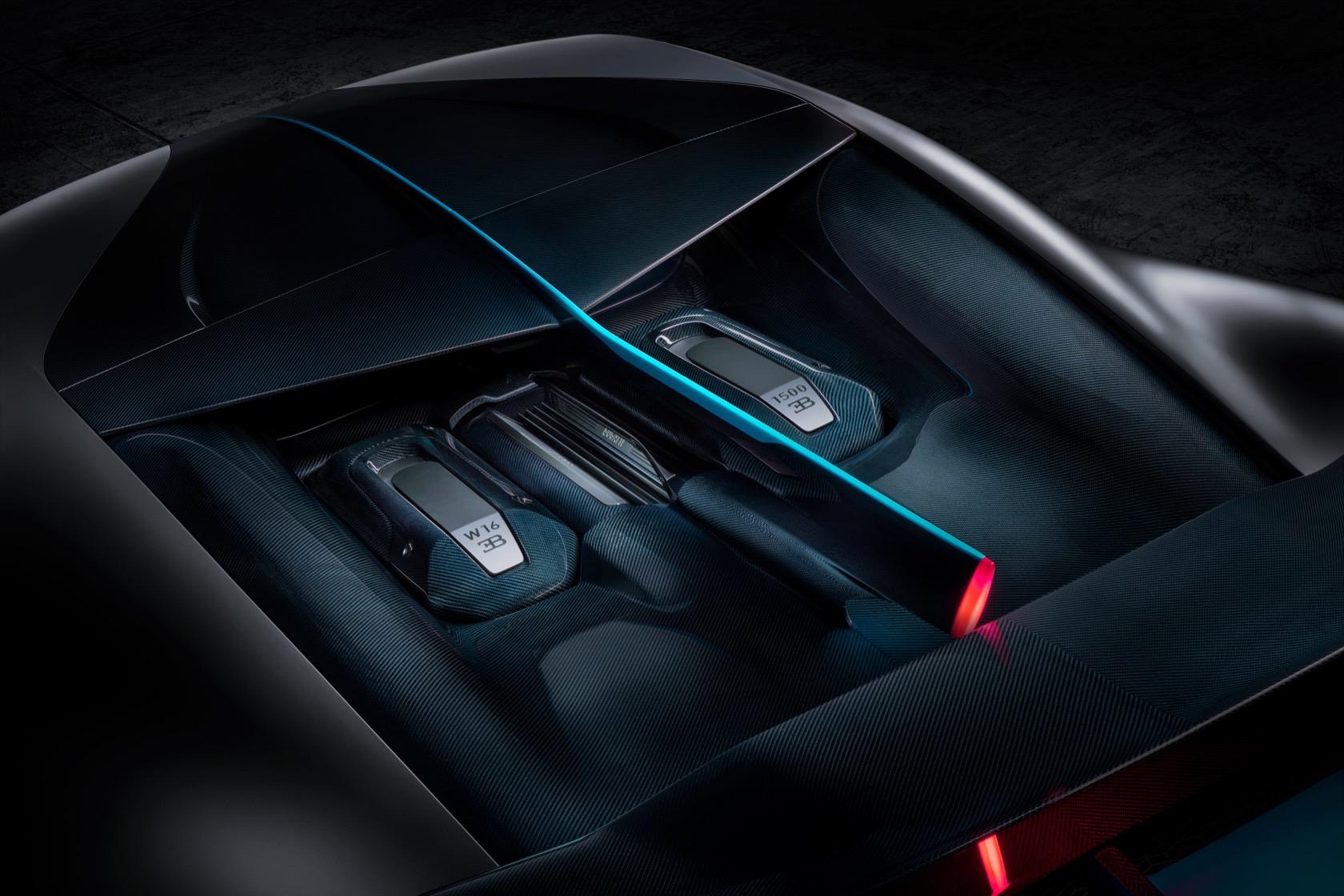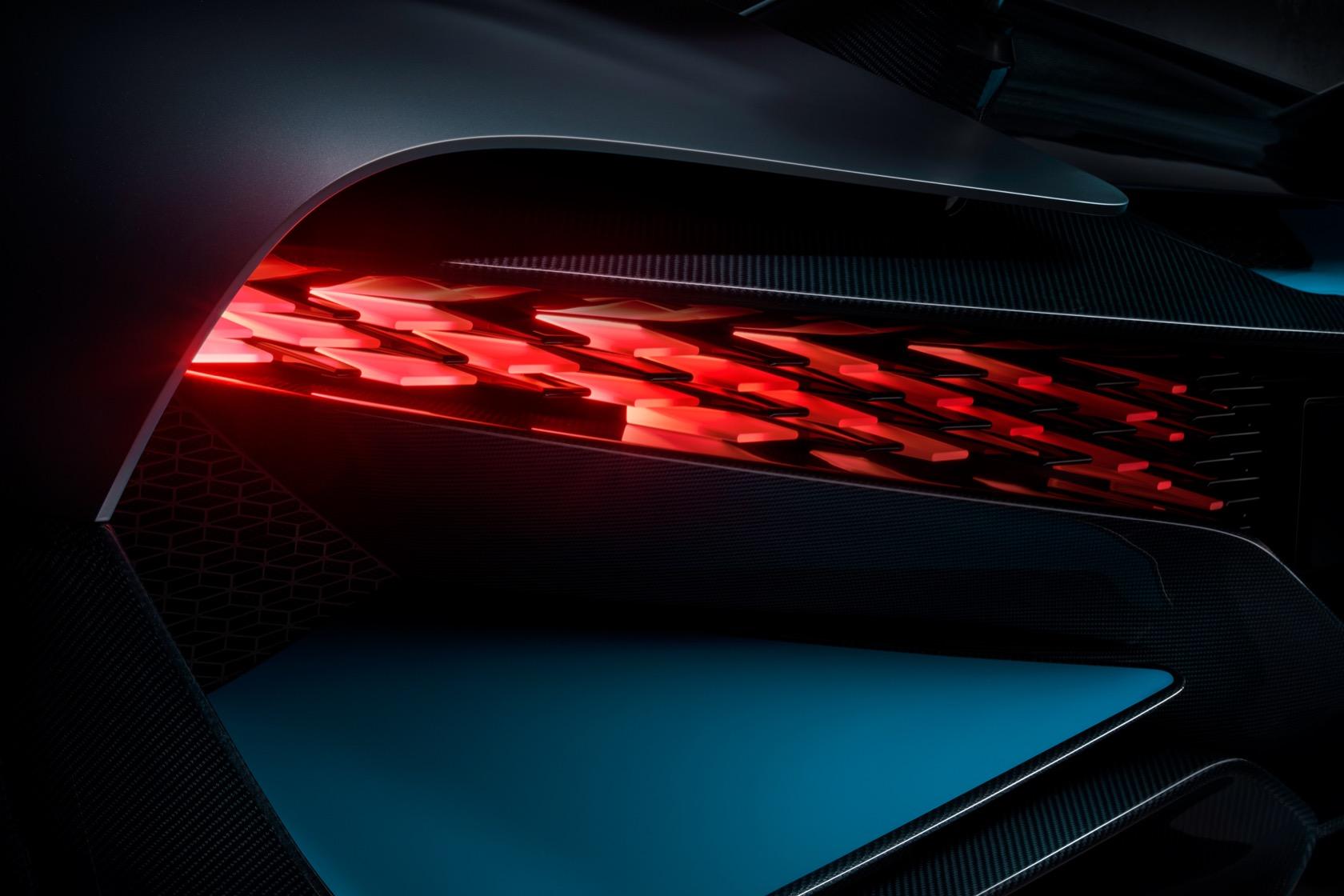Bugatti Divo Is A Super-Rare Coachbuilt King Of Cornering
Nobody said the Chiron was underwhelming, but the Bugatti Divo certainly suggests there's more than one way to make a ridiculously-fast hypercar. Making its world debut in California today, the Divo reimagines the Chiron as a 1,479 horsepower, crisply-cornering beast.
To do that, Bugatti put the Chiron on a diet. 77 pounds was removed to make the Divo, part of a return to coachbuilding tradition that marked the automaker's first few decades in business. Back then, it would craft custom bodies atop existing chassis.
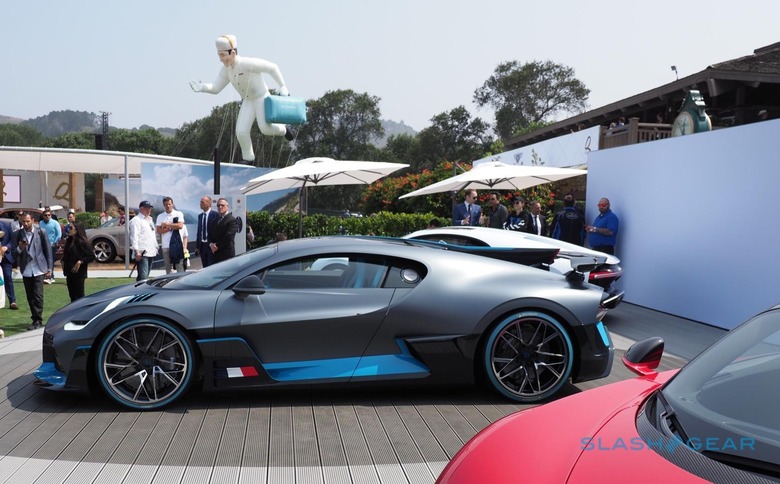
Now, though, it's using its own cars to make limited-run special editions. Where the Chiron is intended to go very, very fast in a straight line, Divo's talents are awakened in the corners. Aerodynamic changes, among other things, have boosted downforce by 198 pounds over the Chiron, while lateral acceleration has risen to 1.6g.
Some of the changes are only barely visible. The front cover, for instance, now has air intakes which help to reduce the effective cross-sectional area of the Divo. They also make for better air flow over the front of the car. An optimized "air curtain" does the same on the sides. A wide front spoiler with a new design improves cooling performance, by guiding more air into the front air inlets.
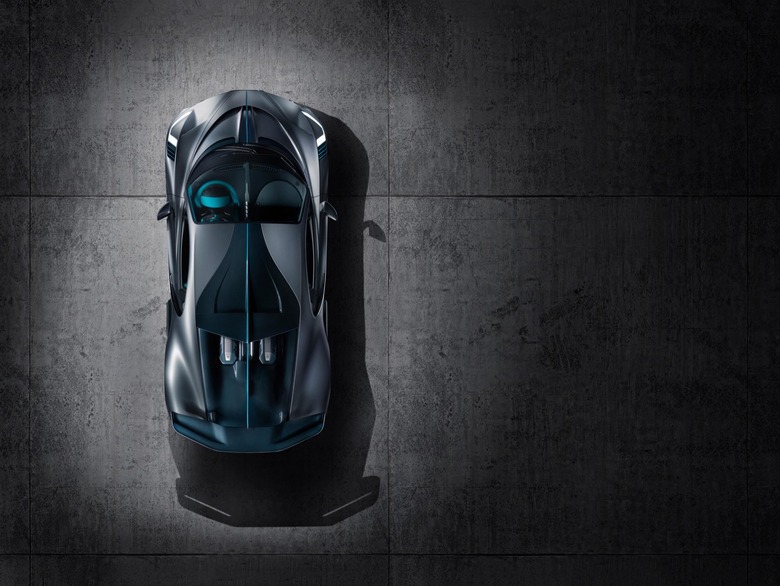
The roof, meanwhile, has been designed to form a flow-optimized NACA air duct. That, in combination with a new engine compartment cover, helps keep the 8.0-liter W16 engine cool. New wheel arch venting, among other things, improves brake cooling.
At the back, there's a new, height-adjustable rear spoiler; that can also function as an air brake, by flipping upright. At 72-inches across, it's 23-percent wider than the Chiron's spoiler, and helps contribute even more downforce. In total, you're looking at over 1,000 pounds of downforce from the car.
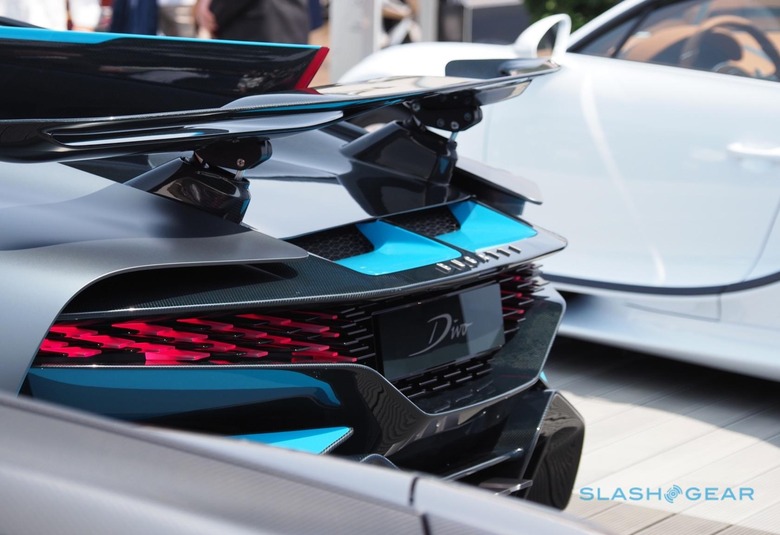
Then there's the chassis and suspension. Bugatti wanted the Divo to be "sharper, more agile, and more nimble," and so the camber was increased. Steering and suspension have been tuned for more direct response and sportier reactions, regardless of driving mode.
There's a sacrifice for that cornering prowess, mind. The Divo's top speed has been limited to 236 mph, and it does without the Top Speed mode that the Chiron boasts.
Even with that limit, though, on the right track the Divo's better talents in the turns pays dividends. On the Nardò handling circuit, for example, Bugatti says the Divo shaved eight seconds off the Chiron's lap time.
The visual differences become more obvious between the two cars the more you look at them. The horseshoe-shaped front grille, side signature line, and top fin had to be carried over, but otherwise there are numerous changes. A slimmer side line gives the Divo a lower, longer appearance in profile, emphasized by the color scheme: matte Titanium Liquid Silver up top, and petroleum blue-tinted Divo Carbon carbon fiber underneath.
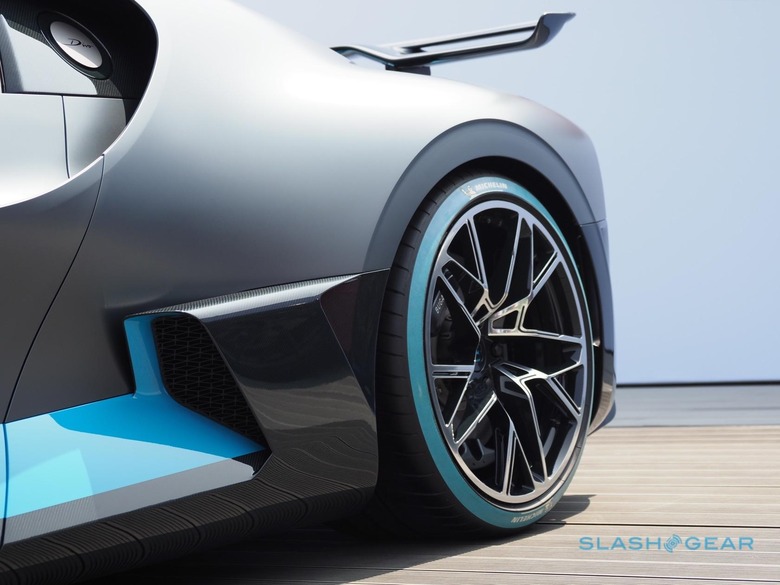
Lightweight LED headlamps – with a special light animation – make the most of the tiny, 1 3/8-inch deep space available, while the rear lamps are partly 3D printed. It consists of multiple fins, of different sizes, 44 of which light up. Divo Racing Blue highlights pick out the lines.
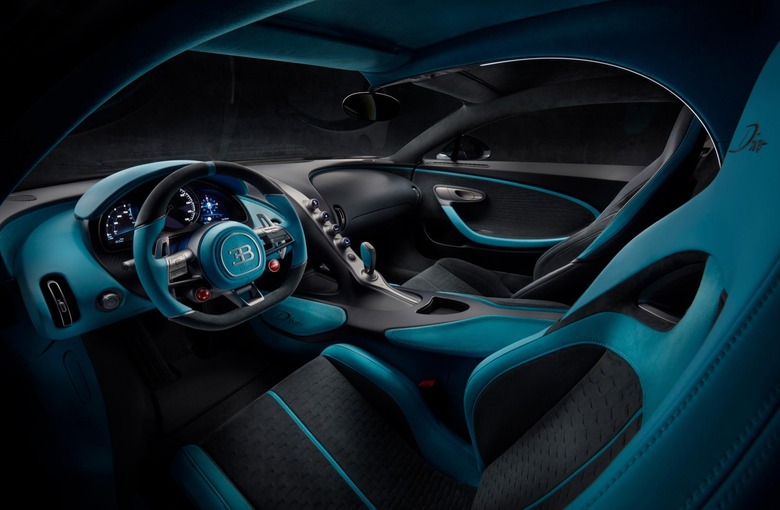
Inside, there's matte carbon fiber, Divo Grey Alcantara, and glass-based anodized grey metal trim. Divo Racing Blue Alcantara leather is used, too, while the shape of the external lights is echoed in the drop trims and seat areas. Bugatti says the seats have more lateral support, while the partly-Alcantara-clad steering wheel has larger shift paddles. The armrests and calf supports have also grown, compared to those in the Chiron.
Even in rarified Bugatti terms, the Divo will be an infrequent sight. Only forty of the cars will be made, each priced at 5m Euros ($5.72m). All forty have already been sold, after the automaker showed off its project to a handful of select customers.

